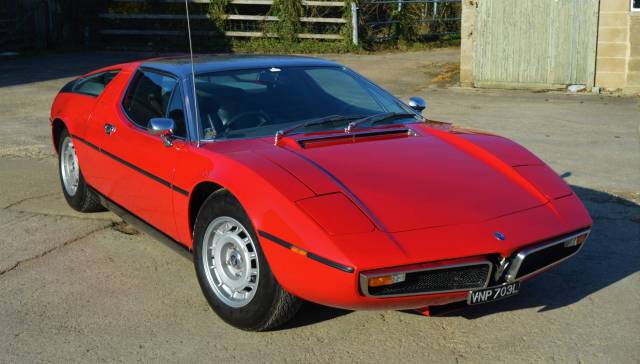Maserati Bora Classic Cars for Sale
The Maserati Bora stands out as Maserati’s first mid-engined road car, produced from 1971 to 1978 in just 564 units. Designed by Giorgetto Giugiaro, it combines a high-revving V8, advanced Citroën hydraulics, and a focus on comfort and practicality rare among 1970s supercars. Its stainless steel roof, adjustable pedal box, and full-size front trunk set it apart from its contemporaries.
Résultats de la recherche
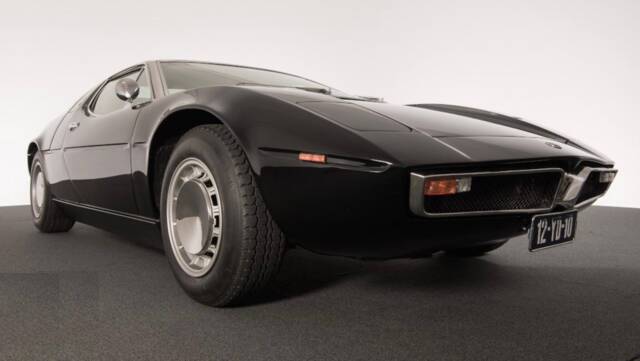
1973 | Maserati Bora 4900
Completely restored and a thrilling car to drive.
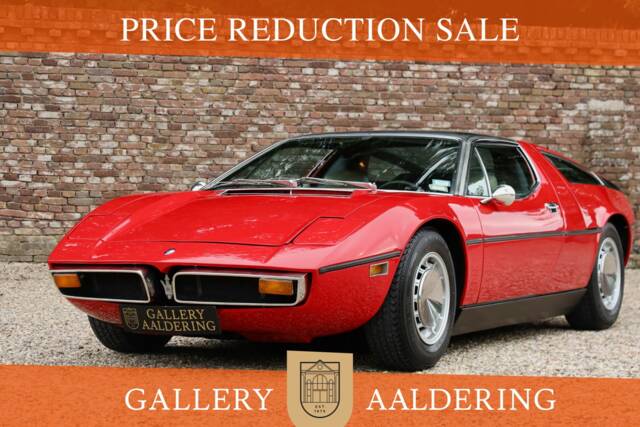
1973 | Maserati Bora 4900
Maserati Bora 4900 PRICE REDUCTION! Fully restored and mechanically rebuilt with factory knowledge, From a comprehensive Belgian collection, With the full Maserati Classiche “Built sheets and certificates”, Only 275 examples of the Bora 4900 were built and sold, Bora - named for the cool fierce Adriatic wind that blows from the north, Presented in Rosso Fuoco with a beige interior,
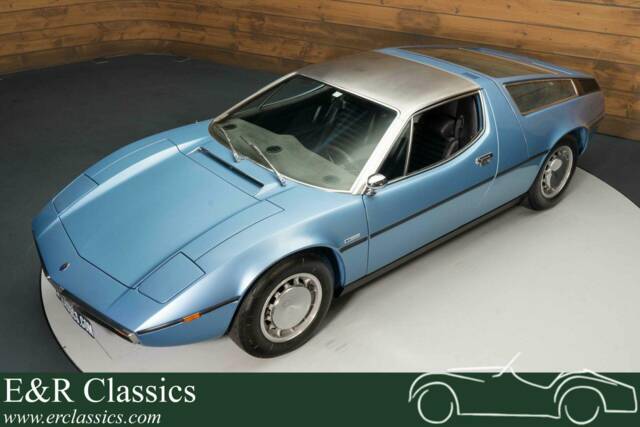
1972 | Maserati Bora 4700
Maserati Bora | Body-off gerestaureerd | Topstaat | 1972
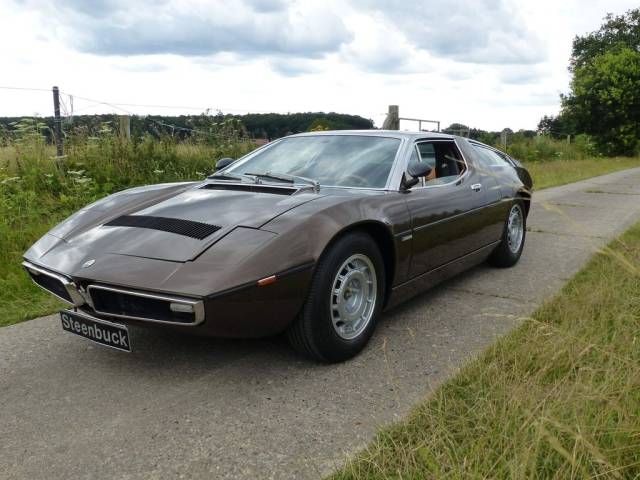
1975 | Maserati Bora 4700
A super sports cars with a mid-engine
Maserati Bora listing references from Classic Trader
Below you will find listings related to your search that are no longer available on Classic Trader. Use this information to gain insight into availability, value trends, and current pricing for a "Maserati Bora" to make a more informed purchasing decision.
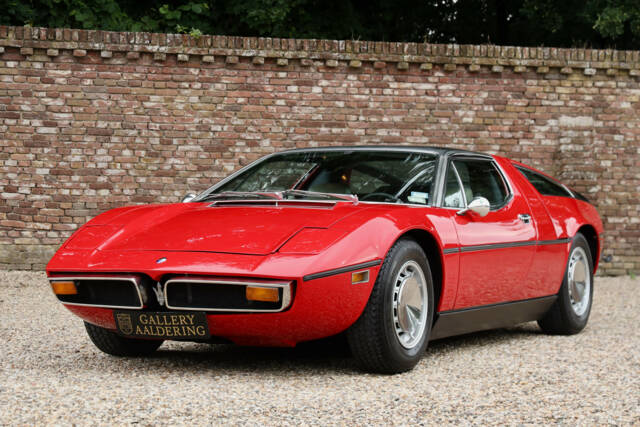
1973 | Maserati Bora 4900
Maserati Bora 4900 Fully restored and mechanically rebuilt with factory knowledge, From a comprehensive Belgian collection, With the full Maserati Classiche “Built sheets and certificates”, Only 275 examples of the Bora 4900 were built and sold, Bora - named for the cool fierce Adriatic wind that blows from the north, Presented in Rosso Fuoco with a beige interior,
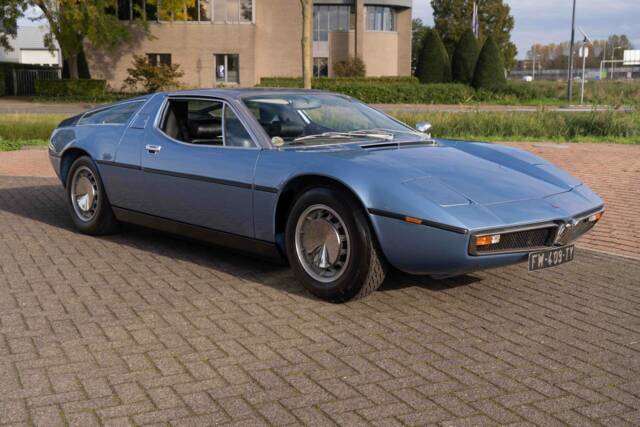
1972 | Maserati Bora 4700
Maserati Bora | 1972 - For sale by auction. Estimate 249950 EUR
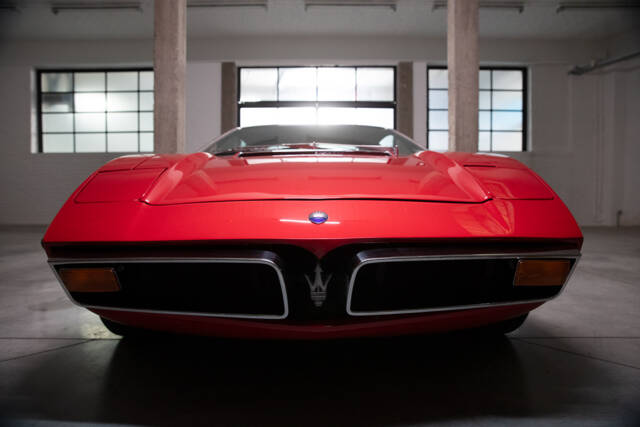
1972 | Maserati Bora 4900
A Masterpiece of Italian Automotive Excellence
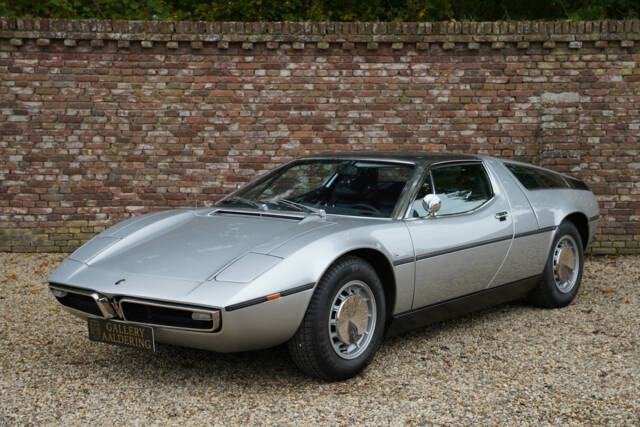
1973 | Maserati Bora 4700
Maserati Bora 4.7 Original and unrestored condition, A remarkably well-preserved Maserati, Finished in factory-correct Argento Metallic over Pelle Nero, Coachwork by Giorgetto Giugiaro of Italdesign, Full history (Sweden) of owners is known, This specific Maserati has often been used for articles about Maserati Bora as a perfect example
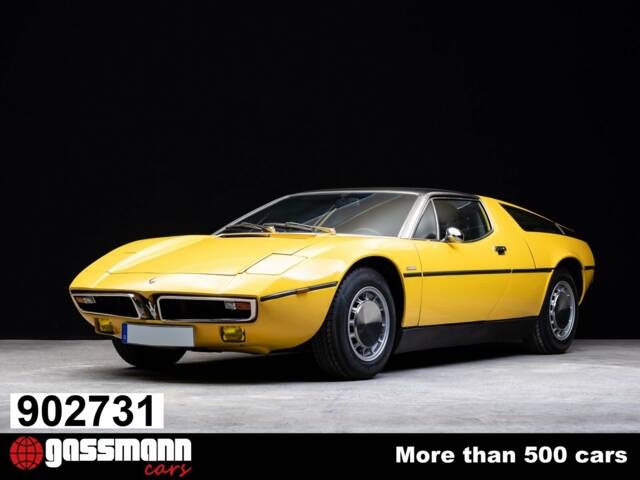
1972 | Maserati Bora 4700
Bora 4700 Coupe - Tipo AM117 - 1 von 314
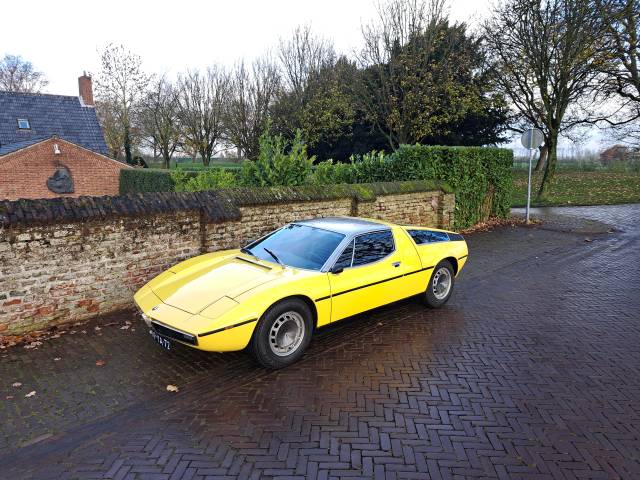
1973 | Maserati Bora 4900
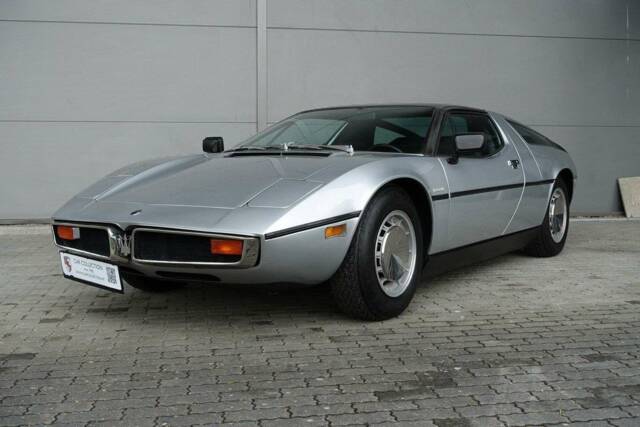
1973 | Maserati Bora 4900
Maserati Bora 4900
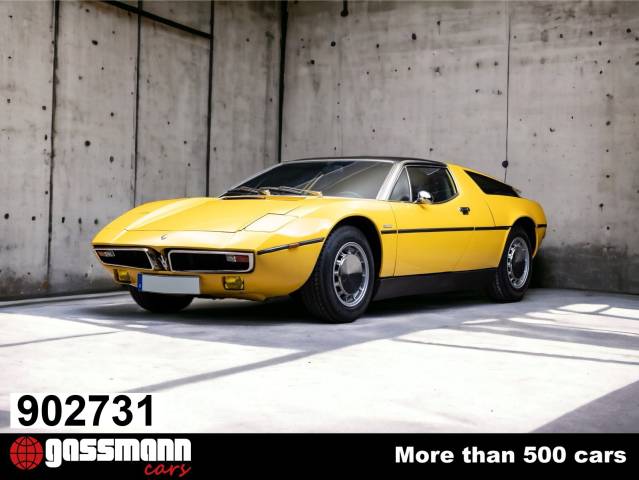
1972 | Maserati Bora 4700
Bora 4700 Coupe
1973 | Maserati Bora 4700
Maserati Bora 4700 (1973)
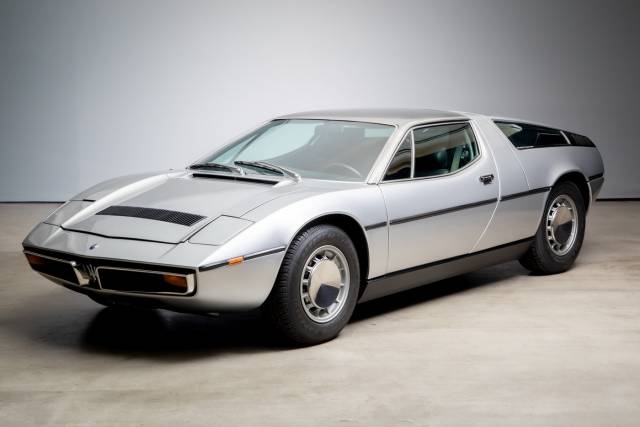
1975 | Maserati Bora 4900
Bora 4900
Introduction and history of Maserati Bora
The Maserati Bora, introduced at the 1971 Geneva Motor Show, marked a turning point for Maserati. Developed under Citroën’s ownership, it was the brand’s response to the mid-engine revolution led by Lamborghini and Ferrari. The Bora’s name, like many Maseratis, references a wind—in this case, the cold, dry Bora of the Adriatic. Production began in 1971 and continued until 1978, with only 564 cars built. The Bora replaced the Ghibli and was succeeded decades later by the MC12. Its development brought Maserati into the modern era, introducing four-wheel independent suspension and a focus on both performance and comfort. The Bora’s production ended after De Tomaso’s takeover of Maserati in 1978.
Model history
The Bora project, initially known as Tipo 117, began in 1968 and resulted in a prototype by 1969. The production car debuted in 1971. Two main engine variants were offered: a 4.7-litre V8 (289 units) and a 4.9-litre V8 (275 units). Early 4.9-litre cars featured pre-USA styling, while later models adapted to US regulations. The Bora’s chassis and suspension innovations influenced the later Maserati Merak, which shared its bodyshell but used a V6 engine. The Bora remained Maserati’s only mid-engined road car until the MC12 appeared in 2004.
Highlights of Maserati Bora
The Bora introduced several technical and comfort innovations: a hydraulically adjustable pedal box, telescopic and tilting steering wheel, and a full-size front trunk. Its stainless steel roof and A-pillars, double-glazed partition between cabin and engine, and carpeted aluminium engine cover reduced noise and improved comfort. The Bora’s Citroën-derived hydraulic system powered brakes, seat, pedals, and headlights. Its drag coefficient of 0.30 was advanced for its time. The Bora’s rarity is underscored by its production numbers: only 564 units, split between 4.7L and 4.9L engines.
Technical data
Special Editions and Collectible Models
No official factory special editions of the Bora were produced, but early 4.9-litre models with pre-USA styling (no front grille, small chrome bumpers, no side reflectors) are particularly sought after. Original features such as Connolly leather interiors, rare exterior colours, and complete toolkits add to a car’s desirability.
Weak Spots and Common Issues
While the Bora is praised for its comfort and engineering, buyers should pay close attention to the Citroën-derived hydraulic system, which controls critical functions like brakes and pedal adjustment. Parts for the hydraulic system and original interior trim can be difficult to source. Early models may exhibit issues with front-end 'tramlining' at speed, which Maserati addressed by fitting wider rear tyres on later cars. Rust in the steel monocoque and subframe, as well as wear in the complex suspension, should be checked carefully.
Engine and Performance, Transmission and Handling
The Bora’s V8 engines deliver strong acceleration, with 0–100 km/h times around 6.2–6.8 seconds and top speeds up to 285 km/h. The ZF 5-speed transaxle provides precise shifting. Four-wheel independent suspension and ventilated disc brakes ensure capable handling and stopping power. The hydraulic pedal box and adjustable seat allow for a tailored driving position, enhancing long-distance comfort. Compared to its contemporaries, the Bora is noted for its ride quality and reduced cabin noise, thanks to its double-glazed partition and insulated engine cover.
Both the 4.7L and 4.9L variants are valued, with early 4.9L pre-USA cars and well-preserved original examples being especially notable.
Interior, Comfort, Exterior and design
Giorgetto Giugiaro’s design for the Bora features sharp lines, a low front with pop-up headlights, and a distinctive brushed stainless steel roof and A-pillars. The interior is trimmed in high-quality leather, with electric windows and air conditioning as standard. The hydraulically adjustable pedal box and telescopic steering column improve ergonomics. Original cars may feature rare colours such as Rosso Fuoco or Argento Indianapolis, and Connolly leather in various shades. Accessories like the original Battaini toolkit and jack, as well as original keys, are valued by collectors. The Bora’s full-size front trunk and double-glazed engine partition set it apart from other mid-engined supercars of its era.
Other relevant features
The Bora’s engine is derived from the Maserati 450S race car, using aluminium alloy for the block and heads, with 16 valves and four chain-driven overhead camshafts. The engine and gearbox are mounted on a subframe with flexible mounts to improve comfort. The Bora was praised by period automotive press for its combination of performance, comfort, and practicality, and was featured in magazines such as Road & Track and Classic & Sports Car.
Summary
The Maserati Bora is a rare and technically advanced 1970s supercar, combining a high-revving V8, innovative hydraulics, and a focus on comfort and usability. With only 564 units produced, it remains a unique entry in Maserati’s history, notable for its engineering, design by Giugiaro, and its position as Maserati’s first mid-engined road car.




